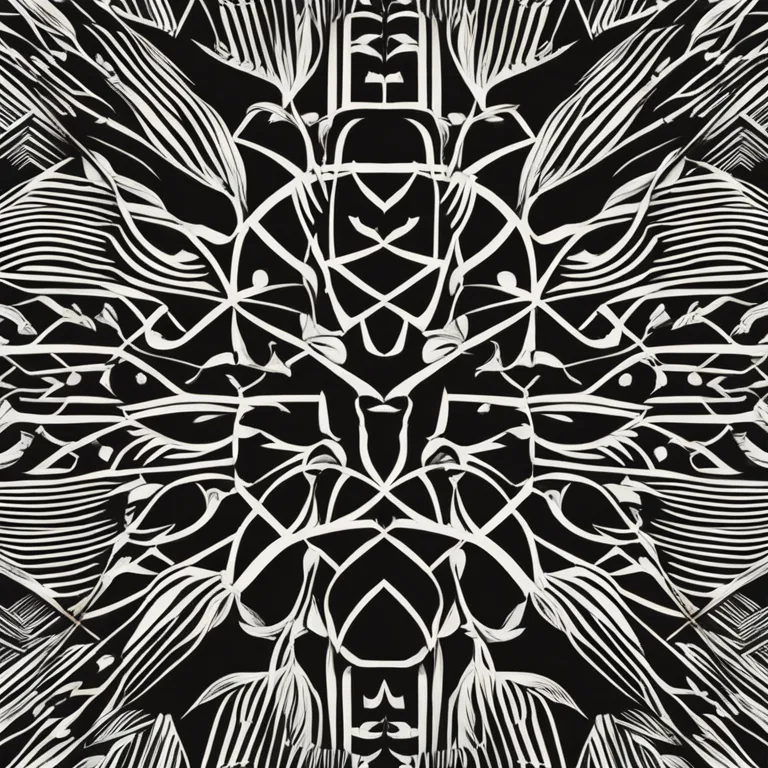
The Symmetry of Palm Lines: A Myths vs. Reality Analysis
Discover the truth about the symmetry of palm lines, their meanings in palmistry, and how they can reflect individual life stories.
article by Nora Pennington
Palmistry at a Glance
The ancient art of palmistry, also known as chiromancy, involves the study of the palm to analyze personality traits and predict future happenings. For centuries, practitioners have examined the various lines, shapes, and mounts on a person's hand, each believed to carry its own significance. As digital technologies evolve, palmistry embraces new tools, like apps and online readings, making it accessible to a global audience curious about what secrets their hands may hold.
Searching for Symmetry
When examining the lines on our palms, one might wonder about their symmetry—or lack thereof. It is a common misconception that the lines on both palms should mirror each other perfectly. In reality, asymmetry between the left and right hands is the norm. The lines can vary dramatically, providing palmists with rich insights into a person's past, present, and potential future.

Different Hands, Different Meanings
Palmistry traditions suggest that each hand carries its own set of meanings. The left hand is often associated with characteristics received at birth, including family and inheritance, while the right hand is typically seen to reflect individual aspirations, experiences, and the conscious effort we put into our lives. This duality indicates that a lack of symmetry between palm lines not only is expected, but is also symbolically important.

Lines that Tell a Story
For palmists, the most commonly examined lines include the heart line, head line, life line, and fate line. Each serves as a storyboard for different aspects of life: love and relationships, intellect and knowledge, life path and vitality, and the impacts of external factors on one's life journey. The variations and intricacies of these lines from one hand to the other help construct a personalized narrative for each individual.

Studies on Symmetry
Recent studies have delved into the factors influencing palm line formation, suggesting that genetics and environmental influences play roles, even while some palmists rely on spiritual or esoteric explanations. It has been found that while genetic components can explain broad palm line patterns, the fine details are often shaped by unique fetal development processes, reinforcing the idea that each person's story is truly specific to them.
Interpreting Asymmetry in Modern Palmistry
As we look ahead, modern palmistry continues to evolve, marrying traditional techniques with advances in genetic understanding. The varying lines between the left and right palms provide a kaleidoscope through which to view a person's evolution. Palmists today often consider the dominance of one's hand in interpreting these lines, factoring in how active choice and chance events can bring about shifts and changes in one's palmistry profile.
Final Thoughts
In conclusion, the symmetry of palm lines, or the common lack thereof, can provide fascinating insights into an individual's life. Both ancient wisdom and modern practices teach us that these unique patterns serve as a distinctive code—a personal map that can help navigate life's intricate tapestry, revealing our complex natures and the ever-changing human condition.
Published: 1/3/2024
Modified: 1/3/2024
More predictions
Come back here soon to learn more about yourself and your future


The Mystique of Water Hands in Palmistry
Discover the characteristics and significance of the water hand type in palmistry, an intriguing aspect of personality analysis.


The Ring of Solomon in Palmistry
The Ring of Solomon is a palmistry feature with roots in myth and mystique. Discover its meaning and implications for wisdom and intuition.


The Palmistry Guide: Your Hand's Roadmap to Life
Discover the fascinating world of palmistry and learn to read the hidden map etched in your hands with our in-depth guide to palm lines and their meanings.